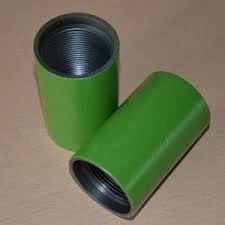- Afrikaans
- Albanian
- Amharic
- Arabic
- Armenian
- Azerbaijani
- Basque
- Belarusian
- Bengali
- Bosnian
- Bulgarian
- Catalan
- Cebuano
- Corsican
- Croatian
- Czech
- Danish
- Dutch
- English
- Esperanto
- Estonian
- Finnish
- French
- Frisian
- Galician
- Georgian
- German
- Greek
- Gujarati
- Haitian Creole
- hausa
- hawaiian
- Hebrew
- Hindi
- Miao
- Hungarian
- Icelandic
- igbo
- Indonesian
- irish
- Italian
- Japanese
- Javanese
- Kannada
- kazakh
- Khmer
- Rwandese
- Korean
- Kurdish
- Kyrgyz
- Lao
- Latin
- Latvian
- Lithuanian
- Luxembourgish
- Macedonian
- Malgashi
- Malay
- Malayalam
- Maltese
- Maori
- Marathi
- Mongolian
- Myanmar
- Nepali
- Norwegian
- Norwegian
- Occitan
- Pashto
- Persian
- Polish
- Portuguese
- Punjabi
- Romanian
- Russian
- Samoan
- Scottish Gaelic
- Serbian
- Sesotho
- Shona
- Sindhi
- Sinhala
- Slovak
- Slovenian
- Somali
- Spanish
- Sundanese
- Swahili
- Swedish
- Tagalog
- Tajik
- Tamil
- Tatar
- Telugu
- Thai
- Turkish
- Turkmen
- Ukrainian
- Urdu
- Uighur
- Uzbek
- Vietnamese
- Welsh
- Bantu
- Yiddish
- Yoruba
- Zulu
seating nipple in tubing
Understanding Seating Nipple in Tubing A Comprehensive Overview
The oil and gas industry relies heavily on the use of various components in tubing systems, one of the most crucial being the seating nipple. A seating nipple is a specialized component installed in the tubing string, primarily designed to facilitate the secure placement of downhole tools, such as plugs and packers. This article delves into the significance of seating nipples in tubing, their applications, and some best practices for their use.
What is a Seating Nipple?
A seating nipple is a section of tubing that has been configured to provide a precise seat for devices that are meant to be set in place downhole. Typically, seating nipples are engineered with a specific profile or shape that accommodates the tool intended to be used. These nipples ensure both a secure fit and a reliable sealing mechanism, which is essential for safe operations in oil and gas production.
Seating nipples are classified into various types depending on their design features, such as the type of sealing system they employ (e.g., rubber, metal, or composite seals). Each design can cater to different environmental conditions, pressures, and temperatures encountered in downhole operations.
Applications of Seating Nipples
In the context of oil and gas extraction, seating nipples serve several critical functions
1. Installation of Downhole Tools Seating nipples provide the necessary anchorage for various downhole tools. When a tool such as a plug is set in a seating nipple, it locks into place and can withstand the pressure from fluids, thereby ensuring that the tool performs its function effectively.
2. Pressure Management The ability to seat tools securely means that operators can manage well pressures more effectively. This is especially important in scenarios where high pressure can lead to equipment failure or environmental hazards.
3. Well Maintenance Seating nipples enable operators to retrieve and replace tools without the need for invasive procedures. Tools can be pulled out and replaced with minimal disruption to the well.
seating nipple in tubing

Best Practices for Using Seating Nipples
To ensure the optimized performance of seating nipples in tubing, operators should follow several best practices
1. Selecting the Right Type Different applications may require different types of seating nipples. Understanding the specific needs of the operation (pressure, temperature, and the type of downhole tool) is crucial in selecting the appropriate nipple.
2. Proper Installation Installation procedures must be adhered to strictly. Misalignment or incorrect installation can lead to tool failures or safety issues during operation. Following the manufacturer's guidelines is essential.
3. Regular Inspections Periodic checks on the seating nipples and associated tools should be conducted to identify any sign of wear, corrosion, or other damage. This proactive approach will help mitigate potential failures before they become critical.
4. Training and Education Continuous education and training for operators on the latest technologies and best practices regarding seating nipples and general tubing operations can greatly enhance safety and efficiency.
5. Monitoring Performance After installation, performance should be regularly monitored. This includes pressure tests, fluid dynamics assessments, and other evaluations to ensure that all components are functioning as intended.
Conclusion
In summary, seating nipples play a vital role in ensuring the efficiency and safety of downhole operations in oil and gas production. By providing secure anchorage for a variety of tools and managing well pressures effectively, they help facilitate maintenance and enhance operational safety. By adhering to best practices in selecting, installing, inspecting, and monitoring seating nipples, operators can significantly improve the reliability of their tubing systems and ensure the long-term success of their drilling and extraction efforts. Through understanding and effectively utilizing these essential components, the oil and gas industry can continue to operate safely and efficiently in the pursuit of valuable natural resources.
-
Tubing Pup Joints: Essential Components for Oil and Gas OperationsNewsJul.10,2025
-
Pup Joints: Essential Components for Reliable Drilling OperationsNewsJul.10,2025
-
Pipe Couplings: Connecting Your World EfficientlyNewsJul.10,2025
-
Mastering Oilfield Operations with Quality Tubing and CasingNewsJul.10,2025
-
High-Quality Casing Couplings for Every NeedNewsJul.10,2025
-
Boost Your Drilling Efficiency with Premium Crossover Tools & Seating NipplesNewsJul.10,2025







